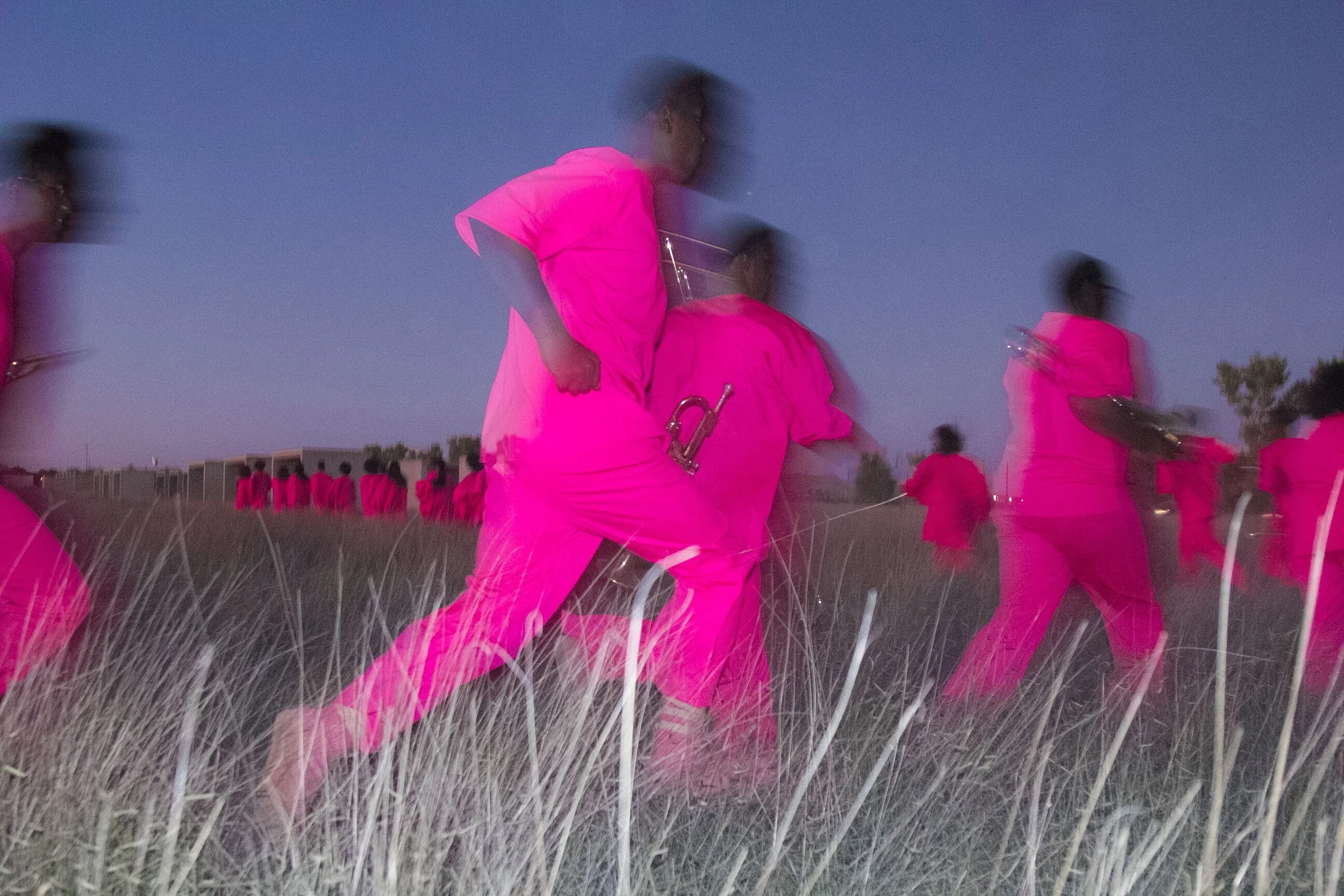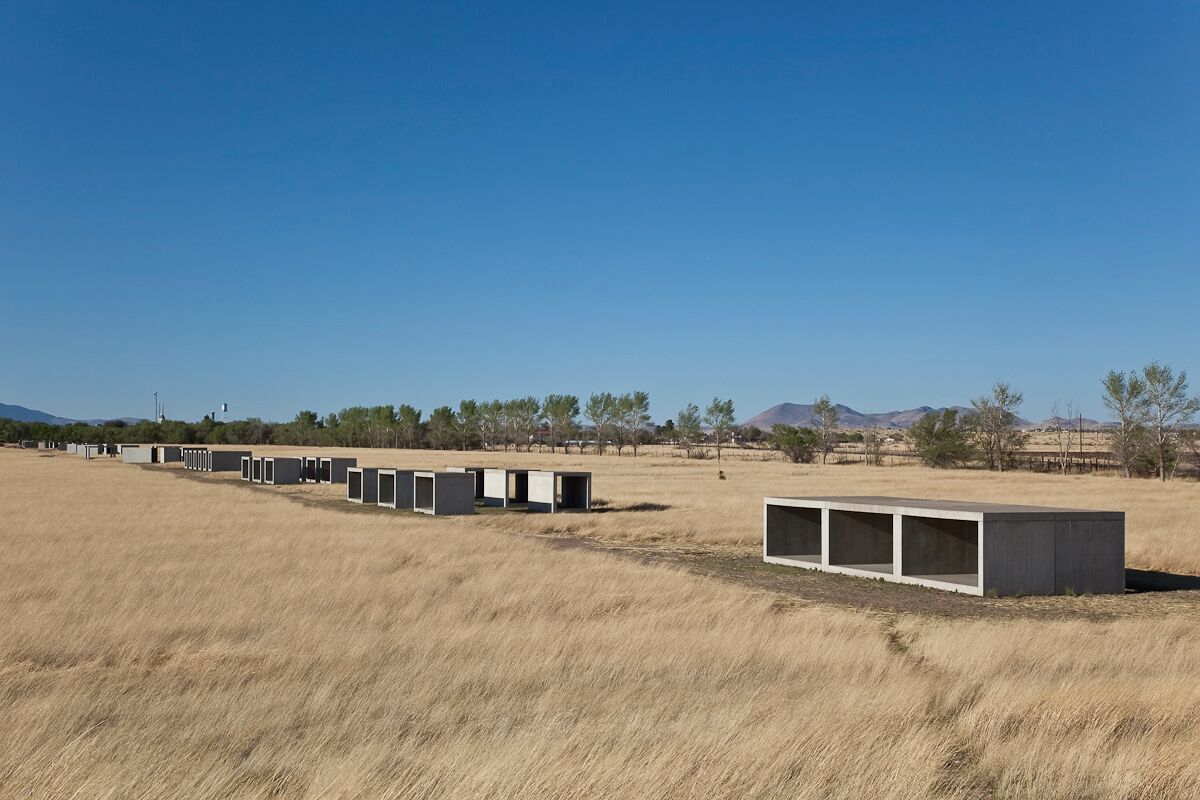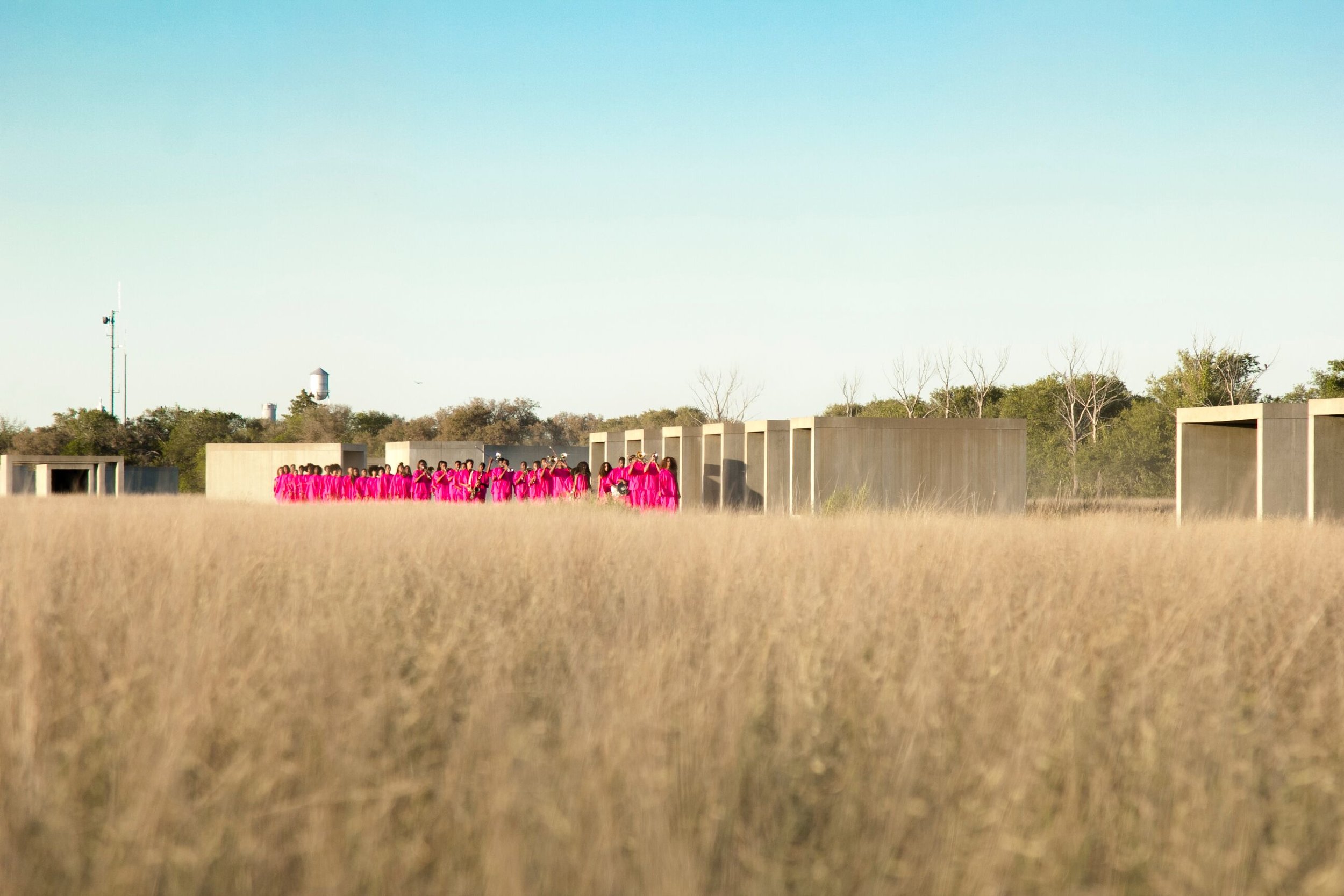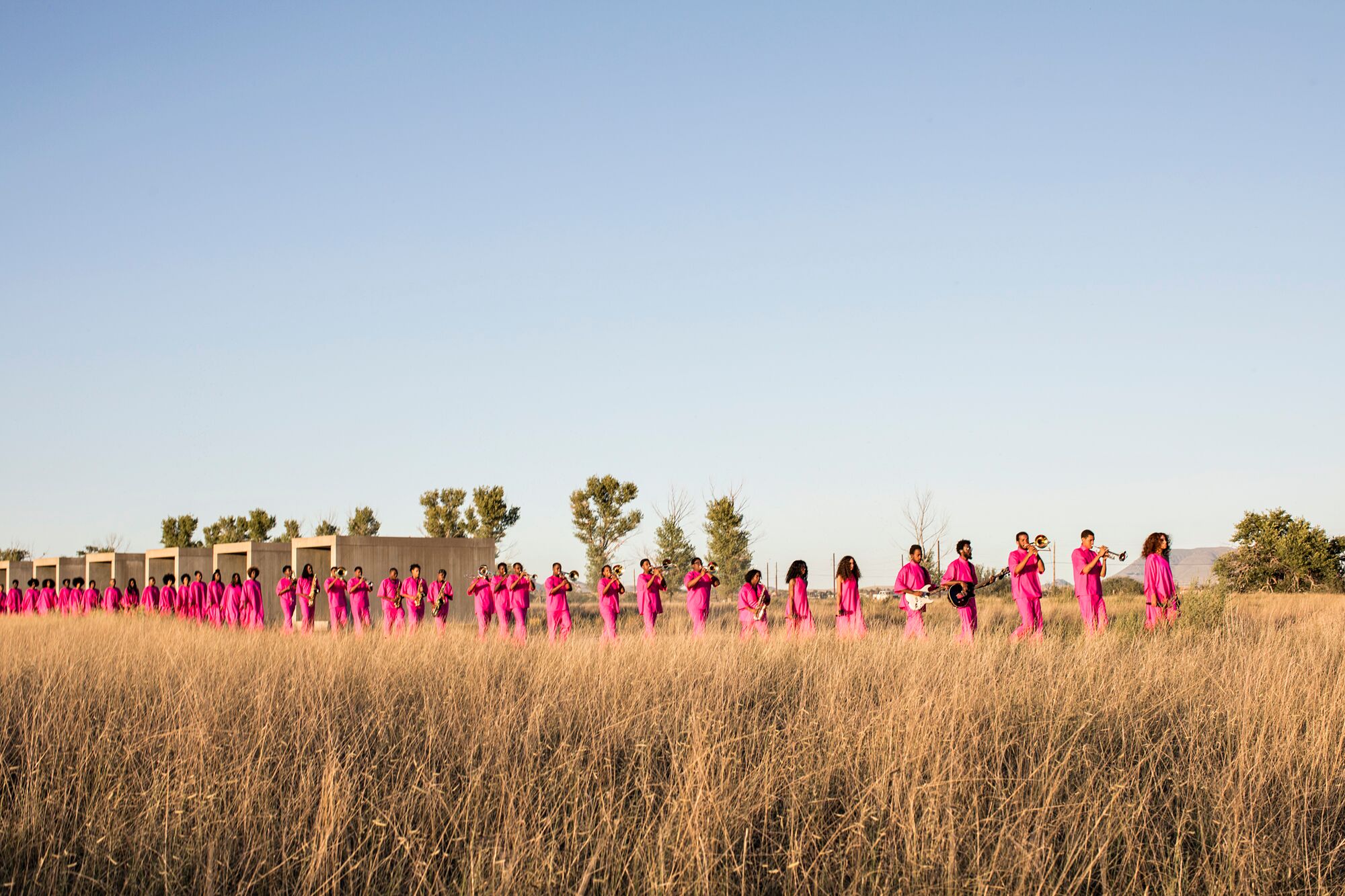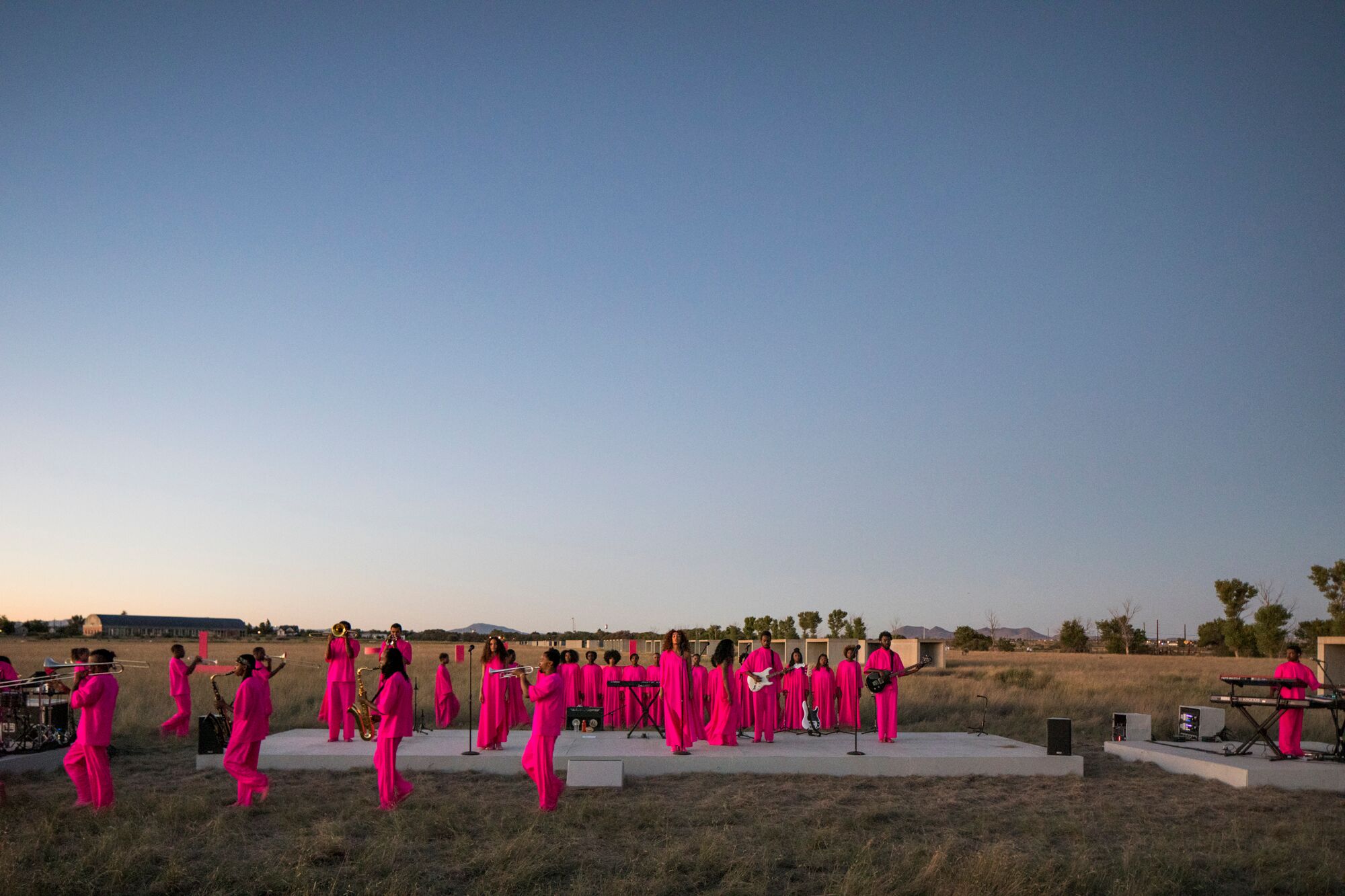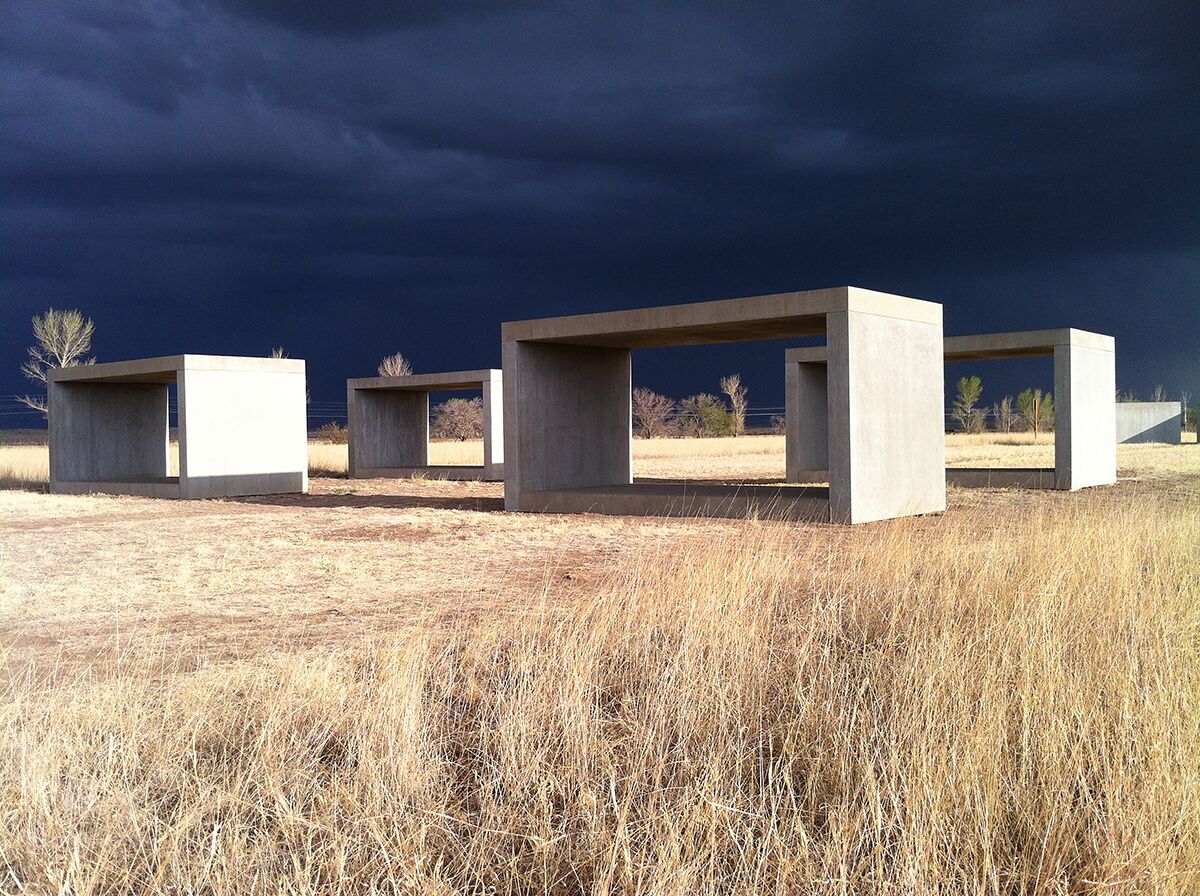Solange Knowles Ferguson Performs Scales at the Chinati Foundation in Marfa, Texas
Edited by Meghan Joong and Julian McKenzie
Marfa, Texas ⏤ On a balmy Sunday in early October 2017, a crowd of nearly 900 people processed across a high plain of the Chihuahuan desert. Clad in cult-like white, the group gathered on the knoll overlooking Donald Judd's 15 untitled works in concrete to experience the public, site-specific performance of "Scales" by Solange Knowles Ferguson at the Chinati Foundation in Marfa that was set to begin momentarily.
Donald Judd, 15 untitled works in concrete, 1980-1984. Permanent collection, the Chinati Foundation, Marfa, Texas. Photo by Douglas Tuck, courtesy of the Chinati Foundation. Donald Judd Art © 2017 Judd Foundation / Artists' Rights Society (ARS), New York.
Photo by Eun Min Yang. © 2017 Judd Foundation/Artists Rights Society (ARS), New York.
Following the release of her critically acclaimed third album A Seat at the Table (2016), Solange began an immersive expression of the artistic concepts of the album, expanding its cultural and historical impact through performance. In late March of this year, the artist presented the performance piece called "Scales" at the Menil Collection in Houston. In May, she organized another version of the performance, entitled "An Ode To," at the Guggenheim Museum in New York. Solange's decision to perform at the Chinati Foundation follows the presentation of a new digital art piece at Tate Modern.
Photo by Eun Min Yang. © 2017 Judd Foundation/Artists Rights Society (ARS), New York.
Photo by Eun Min Yang. © 2017 Judd Foundation/Artists Rights Society (ARS), New York.
At the Chinati Foundation, a 340-acre contemporary art museum founded in 1986 by the artist Donald Judd, the low mountains, high grass and grubby trails were framed by arid air and dust-filled light in a setting reminiscent of a futuristic biblical scene. Fuchsia plywood structures, some low and cylindrical, other tall and cuboid, were placed in the high grass, visually balancing out the row of 15 concrete boxes that Judd had installed to span the length of a kilometre from 1980 to 1984. The foundation was initially conceived for Judd's work and that of his contemporaries, namely John Chamberlain and Dan Flavin. Later on, it grew to include a select group of other artists, such as Roni Horn and David Rabinowitch.
Photo by Alex Marks. © 2017 Judd Foundation/Artists Rights Society (ARS), New York.
Solange's "Scales" performance was coordinated with the time of the setting sun. A procession of some 40 musicians and dancers in magenta processed in a single line from the far end of the grounds, led by Solange, casting the long shadows of their instruments onto the concrete works. The dramatic light became mellower by the minute, thick and honey-like, gold and pink, saturating the crowd's white garments into a deep rose gold, a subdued version of the bold RGB-colour magenta the artists were wearing. The pale attire of the crowd focused all the attention on the musicians and dancers on a concrete-looking stage at the bottom of the knoll, the incline functioning as a topographical amphitheatre of sorts for the audience.
Solange performed pieces from A Seat at the Table, including "Cranes in the Sky" ("I tried to drink it away... I tried to dance it away..."), "Weary" ("I'm weary of the ways of the world,") and "Mad" ("I got a lot to be mad about"), all pieces that included her poignant and soulful political commentary. When the sun disappeared into the horizon west of the hill, Solange's deep voice rose after a long pause against the dusk: "Don't touch my hair... don't touch my soul... don't touch my crown... don't touch what's there." The silhouettes of the audience on the hill stood against a backdrop of pale pink, blue, yellow and orange sky. When her band began to play "F.U.B.U," she intervened with a smile, "I see y'all over there!" At that point, she stepped into the crowd, reached her hand out to a group of young audience members of colour and sang "One for us" to them, dancing her way back onto stage.
Photo by Eun Min Yang.
The jarring placement of the local US border patrol station adjacent to the performance site and museum grounds made the performance all the more a symbol of resistance. In these difficult times, Solange's efforts since the launch of her prolific album and subsequent performance encapsulate the struggle of being a minority, a woman, or anyone who has been continuously left out of the conversation. The performance responds with a powerful assertiveness and actively prompts listeners to participate in the discourse.
Per the hosting foundation, "Judd established Chinati in response to the lack of support he perceived from institutions that he felt did not adequately support artists and the context they wanted to create for the experience of their work." In response, Solange commented in an Instagram post the night of the performance, "Judd's philosophy that the art takes on the space it exists in has resonated with me to the core, and his radical practices of building your OWN institution, is what has pulled me back to make the pilgrimage to Marfa for 7 years."
Donald Judd, 15 untitled works in concrete, 1980-1984. Permanent collection, the Chinati Foundation, Marfa, Texas. Photo by Frank Benson, courtesy of the Chinati Foundation. Donald Judd Art © 2017 Judd Foundation / Artists' Rights Society (ARS), New York.
The performance was politically and aesthetically charged, and was a moving celebration of black identity. It was also a manifestation of the philosophies Solange and Judd share "on symmetry, space, shapes, and light." Not so much in terms of the visuals and choreography, per se – more specifically, Solange's dramatic use of silence in her music, spacing out expectations to a mesmerizing effect, as well as the nuanced low, deep and clear pitches and timbre of her song – sometimes creating contrasts as stark as the shadows on the concrete pieces – complemented aurally the space and light that are also integral to the experience of the permanent installations by Judd.
Solange's "Scales" performance took place on Sunday, October 6th over Chinati Weekend, October 6-8, 2017, a yearly tradition that has attracted Marfa residents and visitors from near and far for open viewing of the permanent collection, a benefit dinner and more. http://chinati.org
Photos by Eun Min Yang. © 2017 Judd Foundation/Artists Rights Society (ARS), New York.

